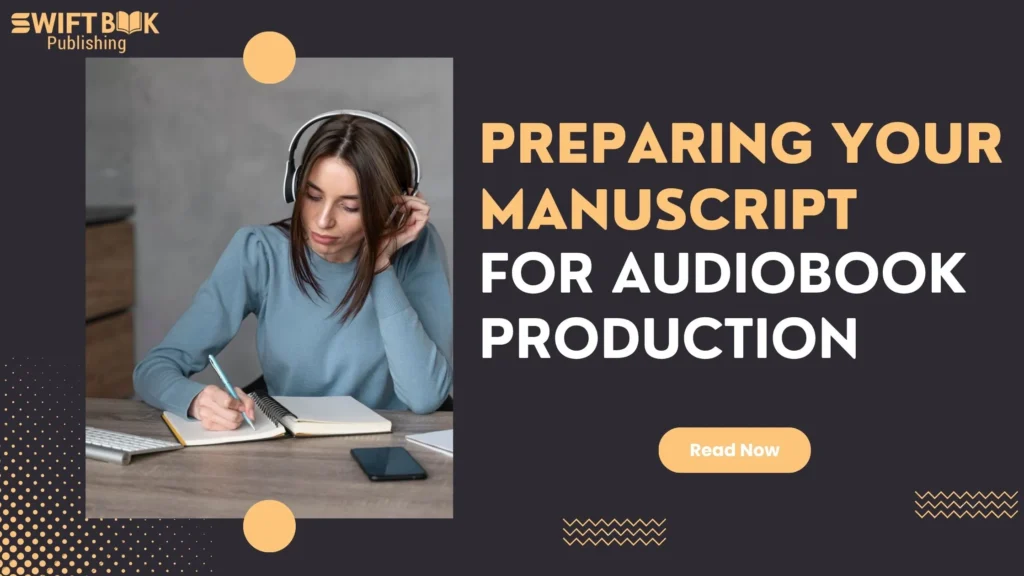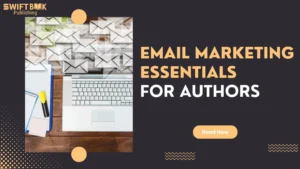Turning your book into an audiobook? Brilliant move. The audiobook market’s exploding, and more readers are tuning in than ever. But before you hit record or hire someone who will, you need to prepare manuscript for audiobook production properly.
This isn’t just about reading your book aloud. It’s about rethinking how your words sound to a listener instead of a reader. And trust us, there’s a difference.
If you’re already knee-deep in your launch checklist (you’ve sent out your book media kit, sorted out your book pre-orders strategy, maybe even drafted your query letter), now’s the time to start thinking about narration. And here’s how to do it right.
Why Audiobook Prep Isn’t Just “Copy-Paste”
Let’s get one thing out of the way: your book isn’t ready for narration just because it’s finished. Even if it’s been through copy editing vs proofreading, there are adjustments needed to make sure it works as an audio experience.
Narrators need a clear, audio-friendly script. That means trimming what doesn’t make sense when heard, simplifying where needed, and removing anything that might cause confusion once spoken aloud.
So let’s break down how to prepare your manuscript for audiobook production, step by step.
Step 1: Strip Out Visual Clutter
Audiobooks don’t come with footnotes, bullet lists, or fancy formatting. You’ll need to simplify your manuscript by removing:
- Tables, charts or diagrams
- Page numbers or headers
- Footnotes (or rewrite them into the narrative)
- Visual cues like “see image above”
Step 2: Rewrite Stage Directions or Scene Breaks
What works in print doesn’t always translate to sound. Phrases like “He looked away, pause, then said…” can get messy in narration. Instead, rework your manuscript for clarity.
Also, if you’ve used asterisks or fancy dividers to mark scene breaks, make sure they’re clear in the text. A narrator can’t see symbols. They need words or direction.
Step 3: Clarify Dialogue Tags and Character Voices
Dialogue is tricky in audio. If you’ve got multiple speakers in a scene, make sure it’s crystal clear who’s talking. You might need to repeat dialogue tags more often than in print. This makes life easier for your narrator and keeps the listener engaged.
If you’re writing a fantasy epic with ten characters named after herbs, think about how that’s going to sound. Clarity wins every time.
Step 4: Decide on Your Narration Style
This is where audiobook services really shine. Choosing the right audiobook narration styles, solo, duet, or full cast, depends heavily on your genre and budget.
- Solo narration: One voice for all characters. Most cost-effective.
- Duet narration: Two voices (usually for dual POV). Popular in romance.
- Multicast: Several narrators. High production value but pricey.
Just like you’d pick your fonts with care (hello, book typography tips), the voice(s) that represent your story are part of your brand.
Step 5: Work with Professional Narrators
Yes, you could read it yourself. But should you? If you’re not a trained voice actor, it’s usually best to work with professionals.
A good narrator doesn’t just read, they perform. They bring rhythm, tone, and emotion. They also know how to handle tricky phrasing, pacing, and character voices. Plus, many audiobook services offer editing and mastering too, so your final audio is crisp, clean, and ready for upload.
Step 6: Review and Approve Audio Files
Once the recording is done, you’ll get sample chapters for approval. Listen closely, ideally with headphones. Flag anything unclear or inconsistent, and don’t hesitate to ask for corrections.
This is your chance to make sure your story sounds exactly how you imagined it, or better.
Beyond the Recording Booth
Once your audiobook is ready, don’t stop there. Make sure it’s part of your wider publishing and marketing strategy:
- Promote the audiobook version during your virtual book launch
- Add snippets to your book promotional video
- Share early listener reviews as part of using reader reviews marketing
- Mention audiobook availability in your email marketing for authors
- Feature your narrator in a Q&A on your Goodreads for authors profile
- Align pricing with your pricing self-published book plan for maximum impact
And if you’re expanding to global markets, remember to plan ahead for book translation publishing and language-specific audiobook editions down the line.
Final Checklist: Making Your Manuscript Audio-Ready
- Remove formatting, visuals, and footnotes
- Clarify scene transitions and character dialogue
- Choose your narration style based on genre and tone
- Hire a professional narrator (don’t DIY unless you’re trained)
- Review the files carefully before distribution
Wrapping Up
To truly prepare your manuscript for audiobook success, you need more than just a polished draft. You need to think like a listener. Every choice you make, from narration style to clarity in character dialogue, directly shapes the listener’s experience.
So if you’re about to bring your story to life in audio, don’t cut corners. And if you’re unsure, professional audiobook services can guide you every step of the way.
Because your words deserve to be heard, literally.







